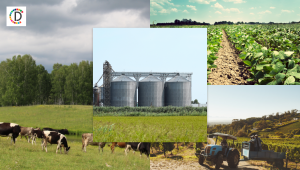Researchers from Institute for Social and Economic Change say price will stabilise only by March 2020
The price of onion in the country spikes every two years and this is largely triggered by a series of factors, including drought, late arrival of monsoon, floods, crop failure, and supply disruptions, according to a recent study. The current sharp spike in onion price is expected to continue till at least March next year, the study says.
Onion rates have been ruling high for the past few weeks in the backdrop of crop failure in Andhra Pradesh and Tamil Nadu, and delayed kharif harvest in Maharashtra owing to late sowing.
The problem was aggregated this year by the damage caused by floods in Gujarat, Madhya Pradesh and parts of Karnataka, said the study titled ‘Price volatility and major causes in demand and supply management of onion in India’ (2019) by Manjunath A.V., Khalil Shaha and Maruthi I., faculty members of Institute for Social and Economic Change (ISEC), Bengaluru.
The study entrusted by the Union Ministry of Agriculture and Farmers’ Welfare noted that the country had witnessed spikes in onion price in 2013, 2015 and 2017, and now in 2019, almost every alternate year.
The area under onion cultivation has gone up from 0.25 million hectares in 1980-81 to 1.2 million hectares in 2017-18, while production has increased from 2.5 million tonnes to 21.4 million tones. Since onion undoubtedly assumed a significant portion in the food basket of Indian households due to its usage, the annual consumption increased to 18 million tonnes, an increase of 3% a year, said the study.
A significant proportion of production comes from Maharashtra, Karnataka, Madhya Pradesh, Gujarat, Rajasthan, Bihar, Andhra Pradesh, Haryana, Uttar Pradesh, and West Bengal. The 10 States accounted for about 90.7% of total onion production and 88.7% of total area under onion.
A total of 34 districts across the country account for almost 52.11% of the all-India production. For example, three districts — namely Nasik, Pune and Ahmednagar — account for more than two-third of production and almost 60% of total area under onion cultivation in Maharashtra. Similarly, in Karnataka, the major onion-growing districts are Vijayapura, Bagalkot, Chitradurga, and Dharwad. The cultivation in U.P. and Bihar is quite diversified across the districts than those of other States.
The post-harvest losses of the crop range from 2% to 20%. “The storage quality of onion from the Rabi season is far better and there is higher shelf life due to dry days and low moisture in the soil. The produce can be stored for 4 to 6 months,” notes the study. The quality of produce in the Kharif is by and large poor due to high moisture content. Further, curing and drying of onion bulbs becomes difficult due to high moisture content, the study says.
Recommending several measures, the study favoured promotion of the crop in non-traditional areas of U.P. by facilitating technology, necessary infrastructure and extension, provision of buffer stocking to counter shortage in the peak months, and judicious use of price stabilisation fund to monitor and stabilise fluctuations in the onion price.
Implementation of market intervention schemes in the event of surplus production and proper implementation of APMC Act, with regular monitoring of market functionaries would solve the issue of shortage price hike.
Source: Thehindu
Link:https://www.thehindu.com/news/national/karnataka/climate-change-behind-spike-in-onion-price-every-alternate-year-study/article30232967.ece




